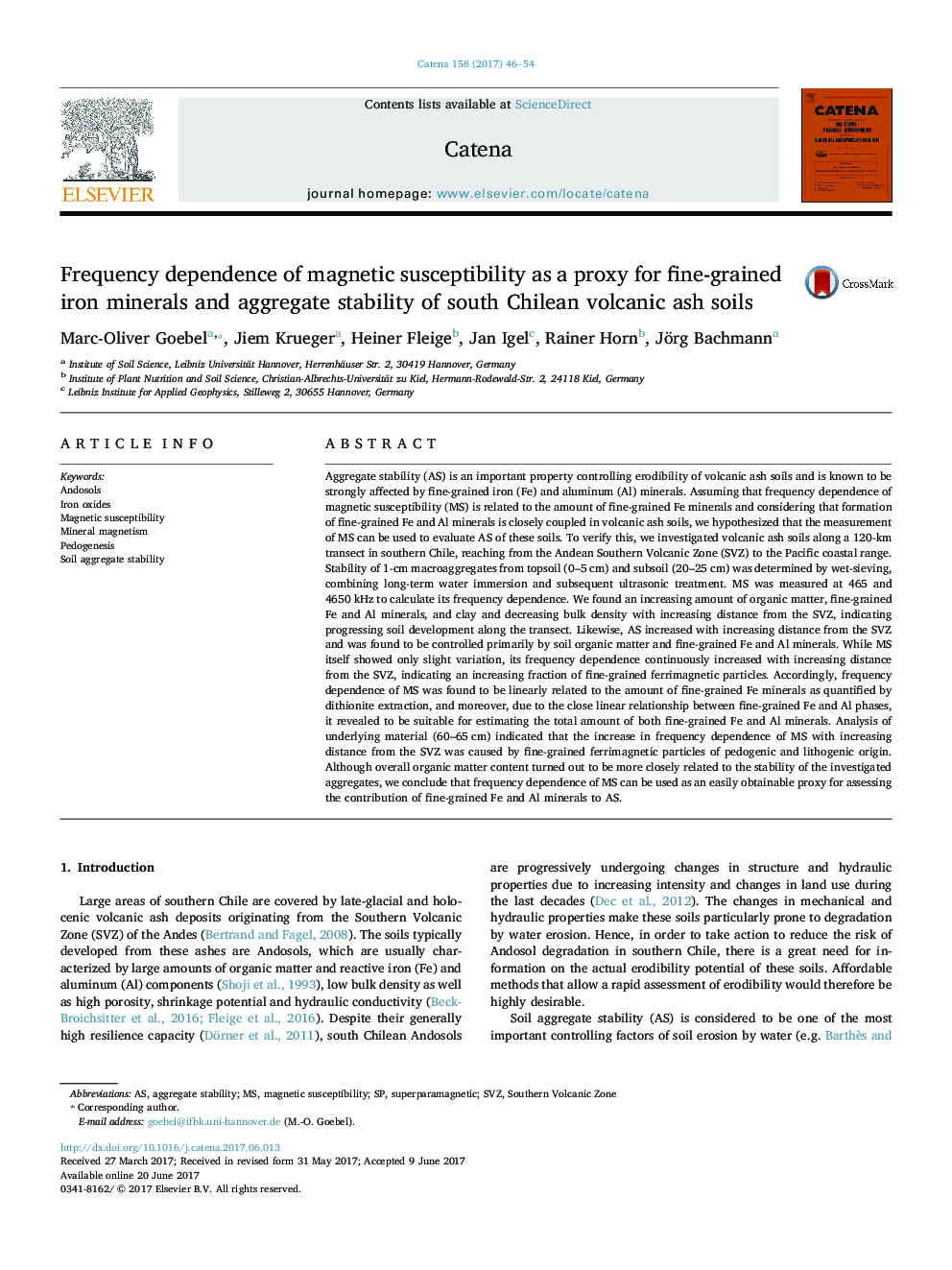| کد مقاله | کد نشریه | سال انتشار | مقاله انگلیسی | نسخه تمام متن |
|---|---|---|---|---|
| 5769889 | 1629196 | 2017 | 9 صفحه PDF | دانلود رایگان |
- South Chilean volcanic ash soils were investigated along a 120-km transect.
- Amount of organic C and fine-grained Fe/Al minerals increased with soil development.
- Aggregate stability was determined by organic C and fine-grained Fe/Al minerals.
- Fine-grained Fe minerals controlled frequency dependence of magnetic susceptibility.
- Aggregate stability was related to frequency dependence of magnetic susceptibility.
Aggregate stability (AS) is an important property controlling erodibility of volcanic ash soils and is known to be strongly affected by fine-grained iron (Fe) and aluminum (Al) minerals. Assuming that frequency dependence of magnetic susceptibility (MS) is related to the amount of fine-grained Fe minerals and considering that formation of fine-grained Fe and Al minerals is closely coupled in volcanic ash soils, we hypothesized that the measurement of MS can be used to evaluate AS of these soils. To verify this, we investigated volcanic ash soils along a 120-km transect in southern Chile, reaching from the Andean Southern Volcanic Zone (SVZ) to the Pacific coastal range. Stability of 1-cm macroaggregates from topsoil (0-5Â cm) and subsoil (20-25Â cm) was determined by wet-sieving, combining long-term water immersion and subsequent ultrasonic treatment. MS was measured at 465 and 4650Â kHz to calculate its frequency dependence. We found an increasing amount of organic matter, fine-grained Fe and Al minerals, and clay and decreasing bulk density with increasing distance from the SVZ, indicating progressing soil development along the transect. Likewise, AS increased with increasing distance from the SVZ and was found to be controlled primarily by soil organic matter and fine-grained Fe and Al minerals. While MS itself showed only slight variation, its frequency dependence continuously increased with increasing distance from the SVZ, indicating an increasing fraction of fine-grained ferrimagnetic particles. Accordingly, frequency dependence of MS was found to be linearly related to the amount of fine-grained Fe minerals as quantified by dithionite extraction, and moreover, due to the close linear relationship between fine-grained Fe and Al phases, it revealed to be suitable for estimating the total amount of both fine-grained Fe and Al minerals. Analysis of underlying material (60-65Â cm) indicated that the increase in frequency dependence of MS with increasing distance from the SVZ was caused by fine-grained ferrimagnetic particles of pedogenic and lithogenic origin. Although overall organic matter content turned out to be more closely related to the stability of the investigated aggregates, we conclude that frequency dependence of MS can be used as an easily obtainable proxy for assessing the contribution of fine-grained Fe and Al minerals to AS.
Journal: CATENA - Volume 158, November 2017, Pages 46-54
